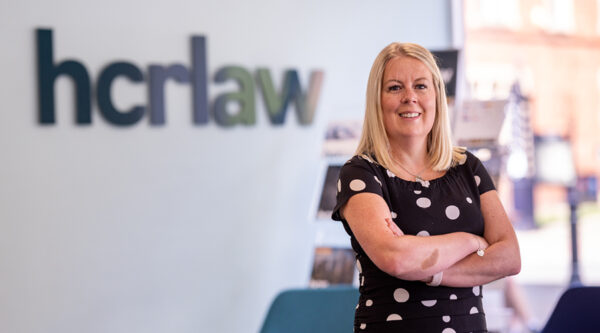

English schools have now welcomed their pupils back and are tackling the challenges of a new term in such extraordinary circumstances.
The Department for Education (DfE) guidance on the full reopening of schools (which can be found here and was updated on 7 August 2020) will be familiar to many as the basis on which English schools can do this safely for pupils, staff and others. This note focuses on two important aspects of reopening – staff INSET/ training days and the use of face coverings in schools.
INSET and training days
The DfE guidance does not specifically address how schools should carry out their INSET/training days for staff, and neither does it address in detail any form of large gathering or meeting of staff. For instance, can schools organise large meetings of staff for INSET training or meetings, or is this too risky or even unlawful? If allowed, how can large staff gatherings be done safely?
The DfE guidance
It is clear that schools must comply with health and safety law, which requires them to assess risks and put in place proportionate control measures. The guidance reminds schools to thoroughly review their health and safety risk assessments and draw up plans that address the risks identified. One measure that is stated as essential in the guidance is a formal consideration of how to reduce contacts and maximise distancing between those in school wherever possible, and minimising potential for contamination so far as is reasonably practicable.
How contacts are reduced will depend on the school’s circumstances and will include staff maintaining distance from pupils and other staff as much as possible.
Under the subsection called ‘Measures elsewhere’ (section 1, part 5), the guidance refers to groups being kept apart ‘meaning that schools should avoid large gatherings such as assemblies or collective worship with more than one group’. The reference to a ‘group’ here appears to be a group of pupils (which can be either be class-sized or, if not possible, include an entire year group). The aim is to maintain consistent groups that do not mix with each other, which would increase the risk of transmission.
In relation to staff, the guidance states that schools should plan how shared staff spaces are set up and used to help staff to distance from each other. It goes on to state that the use of staff rooms should be minimised, although staff must still have a break of a reasonable length during the day. Again, the aim here being to minimise mixing and maximise distancing, this time between staff.
The default position
Given the above, our view is that a school’s default position should be to avoid large gatherings of staff wherever possible. This reduces contacts and maximises distancing between staff.
The DfE guidance does not consider staff to be part of a group or bubble in the same way as pupils, but clearly large staff gatherings risk spreading Covid-19 to staff who, unlike pupils, then go back to different class or year group bubbles where transmission may occur. If this happened, pupils displaying symptoms in any of those bubbles would then need to self-isolate and be tested. Should a pupil test positive, their close contacts will also be asked to self-isolate, which may include whole bubbles.
Furthermore, there is a risk that many members of staff at a large meeting will be required to self-isolate and be tested, should someone in the meeting become ill with Covid-19; someone at the meeting could be asymptomatic, or have the virus without having yet developed symptoms, but then go on to develop symptoms and test positive. In this situation, schools will need to seek advice from their local health protection team and then send home those staff that have been in close contact with the person who has tested positive.
With this in mind, schools may wish to consider alternative ways of holding these INSET meetings without the need for a large gathering, e.g. by live streaming it to staff devices/laptops/PCs or providing a pre-recorded video. If schools do hold in-person meetings, they may wish to reduce the number of staff attending those meetings, for instance by repeating a session with smaller groups. This will help to reduce the risk that a large number of staff are asked to self-isolate should someone in the meeting become ill with Covid-19.
Considerations for large gatherings of staff
This is not to say that INSET meetings involving large numbers of staff are unlawful or not permitted. The DfE guidance is unhelpfully silent on this point. However, where a large meeting is necessary, staff should be able to distance from each other and additional measures, set out below, should be considered as part of a risk assessment.
If schools wish to have INSET meetings involving a large number of staff, they should:
- undertake a thorough Covid-19 risk assessment and consider the measures in the DfE guidance. This includes mitigating the risk that many staff (and/or pupils) may be required to self-isolate following the INSET meeting. Measures to be considered include, amongst others, hygiene, distancing, ventilation, ‘pinch points’ and queues. This risk assessment should be carefully documented and available to staff if requested.
- consider staff that are clinically vulnerable, clinically extremely vulnerable or at increased comparative risk from coronavirus. There may also be staff who, following the summer holidays, are in quarantine having returned from a country subject to the self-isolation rules. We suggest schools consider what additional measures can be put in place for these individuals. Some of them may not wish or be unable to attend. Schools should consider, for instance, offering these staff live streaming of the meeting or a recording of it shortly after it has taken place. Early communication with all staff, but these individuals in particular, is key so that any concerns they raise can be addressed in good time.
Schools may also wish to run any concerns about their INSET arrangements past the DfE. If/when contacting the department, schools will need their unique reference number (URN or UK PRN) to hand. Their coronavirus helpline is 0800 046 8687 (Monday to Friday, 8am to 6pm).
Face coverings
The DfE issued new guidance on 26 August on the use of face coverings in education settings in England, which came into effect this month.
This guidance is for schools and other education institutions that teach pupils in years 7 and above in England. There is separate guidance for early years and childcare providers and schools with children in year 6 and below.
The general approach in the new guidance is that face coverings are not necessary in education settings generally because a system of control, applicable to all education environments, provides additional mitigating measures. Schools and colleges will have the discretion to require face coverings in communal areas where social distancing cannot be safely managed, if they believe that it is right in their particular circumstances.
The guidance goes on to list examples of where ‘education leaders’ might decide to recommend the wearing of face coverings – for pupils and staff – in communal areas of the education setting. These include:
- where the layout of the school makes it difficult to maintain social distancing when moving around the premises
- where, on top of hygiene measures and the system of controls recommended in the full opening guidance to schools, permitting the use of face coverings for staff, pupils or other visitors would provide additional confidence to parents to support a full return of children to school or college.
In addition, where the school is located in a local intervention (lockdown) area the guidance states that face coverings should be worn.
Where face coverings are worn it is vital that clear instructions are given so that all concerned wear them correctly. These instructions will need to be communicated quickly and clearly to staff where new local restrictions are being imposed. Staff and pupils should bring their own face coverings, but schools should take steps to have a small contingency supply available where this does not happen.
The guidance confirms that face coverings will not generally be necessary in the classroom even where social distancing is not possible. Some individuals are exempt from wearing face coverings in various public settings (see here for more information); the guidance confirms that the same exemptions will also apply in schools and other education settings.










